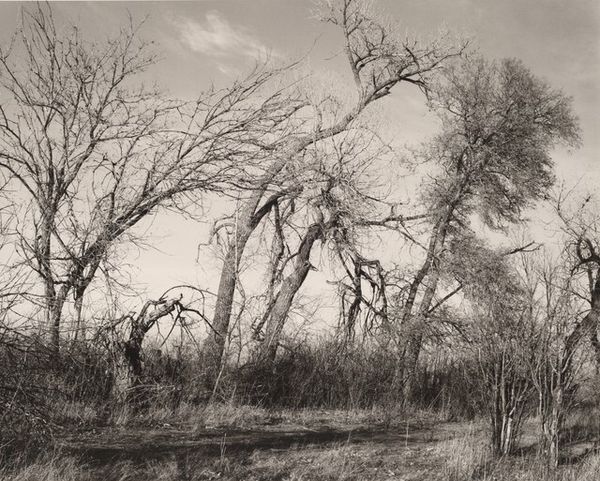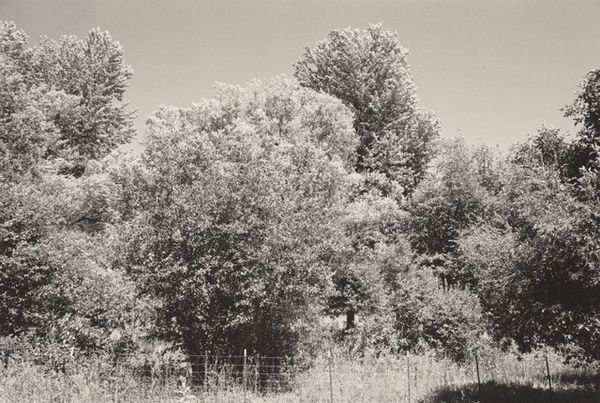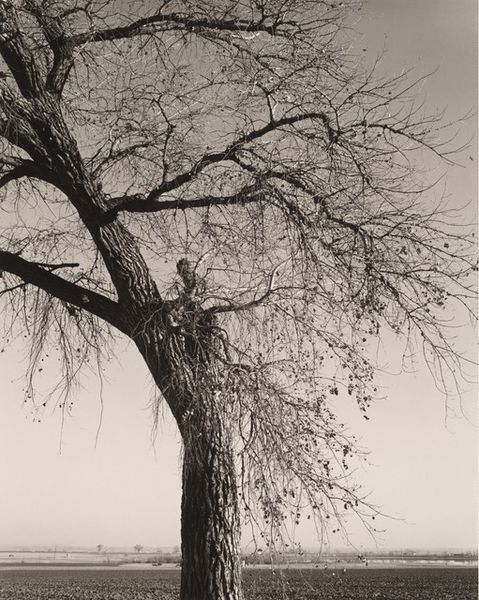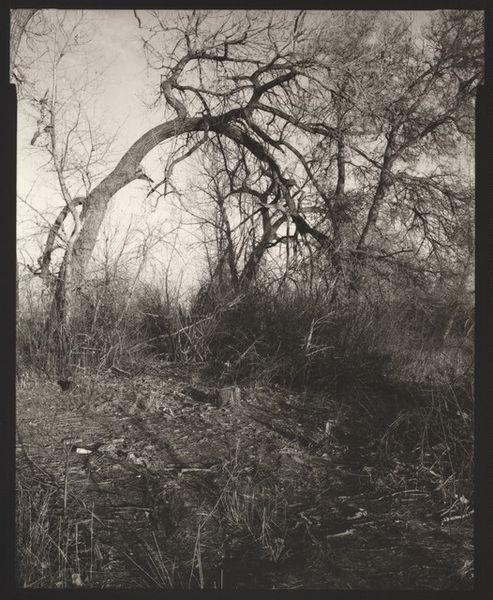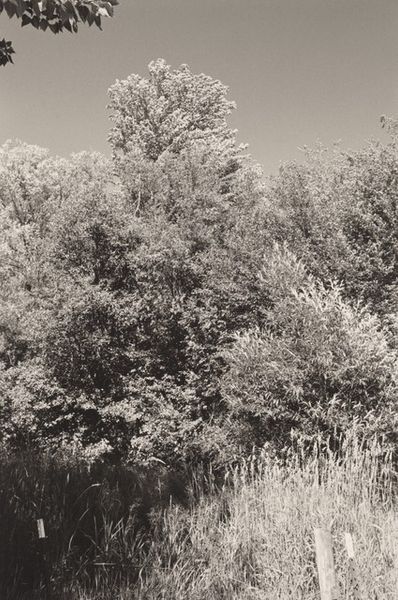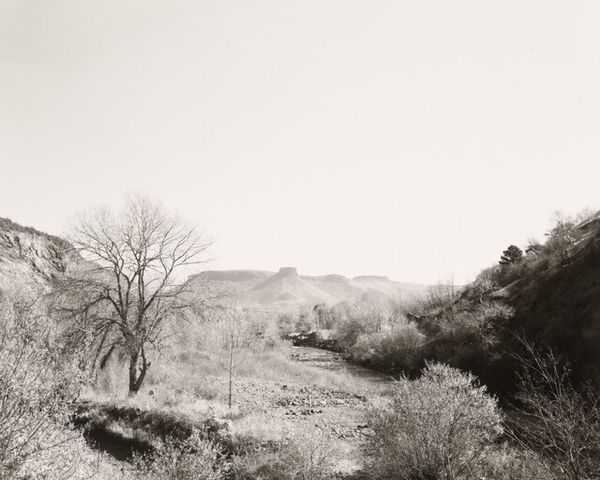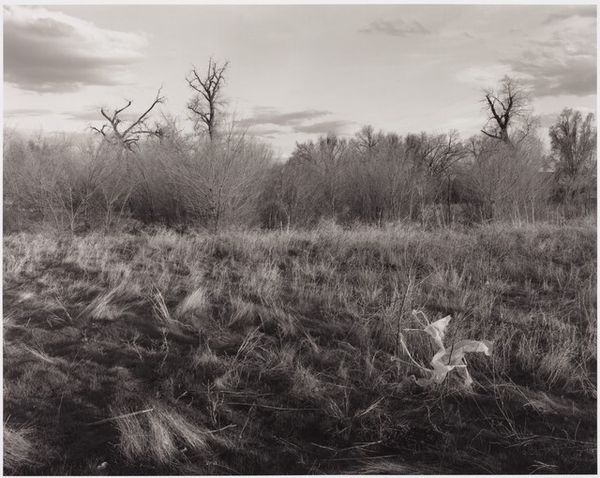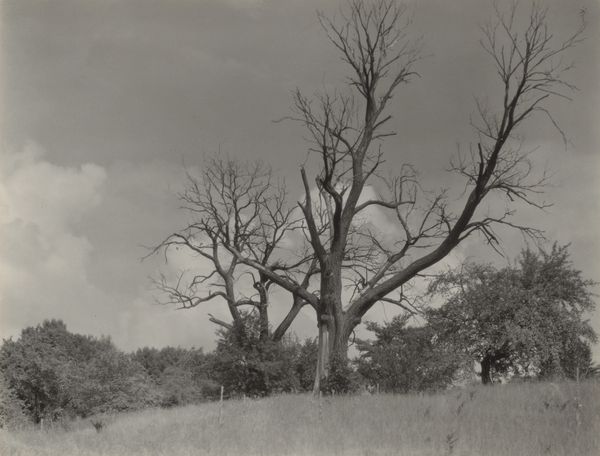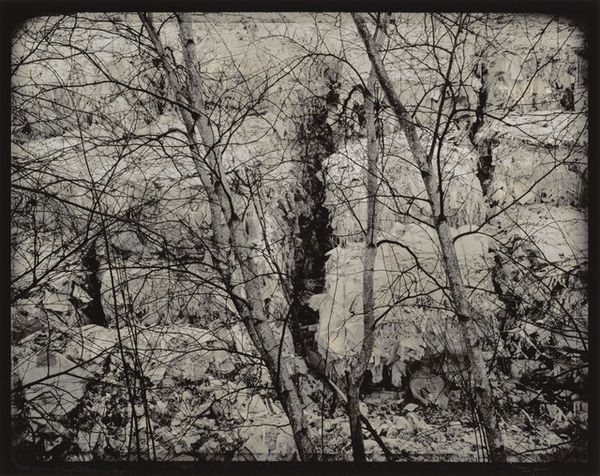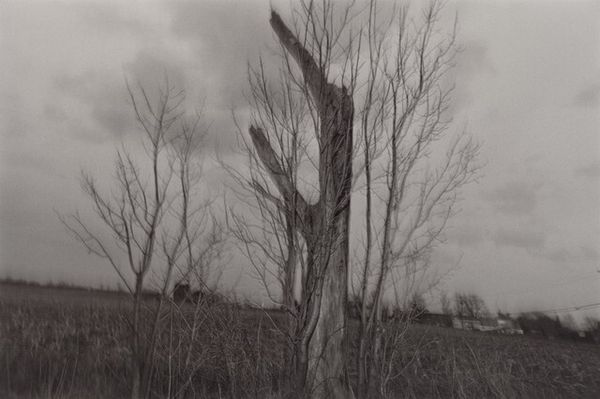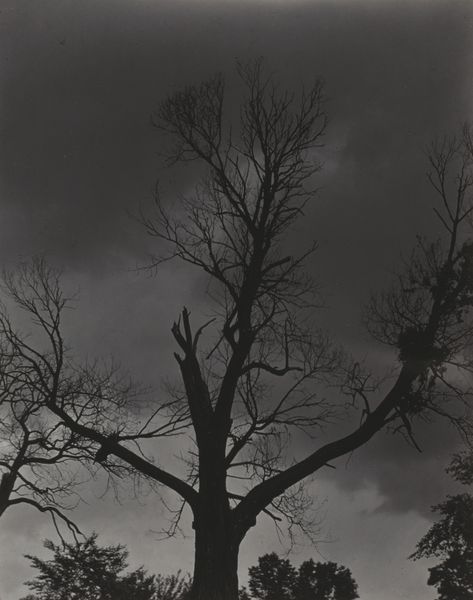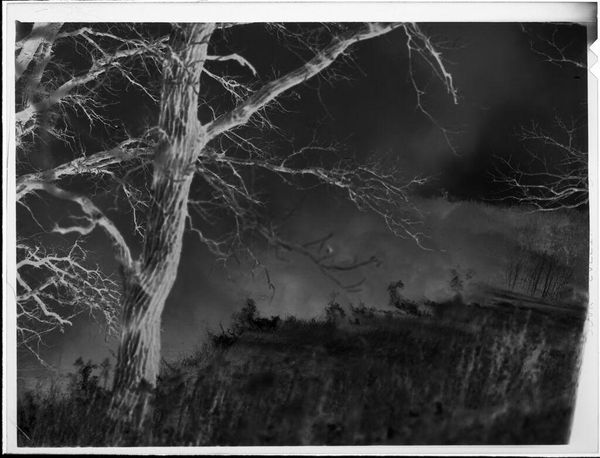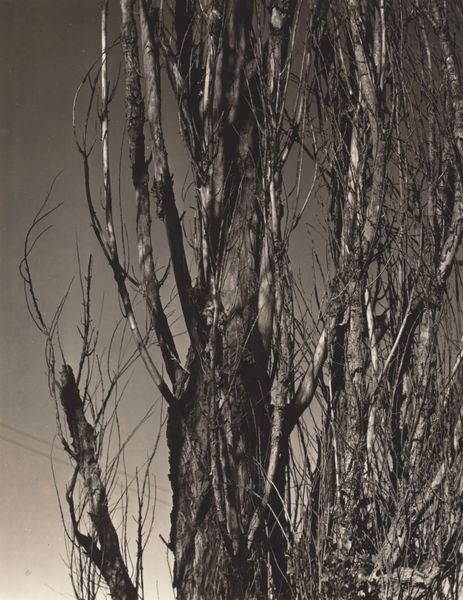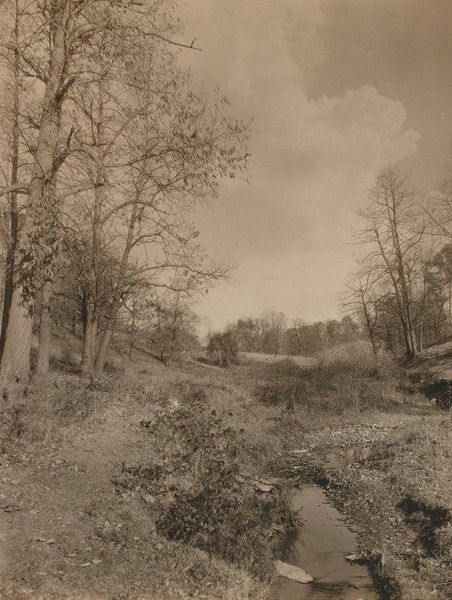
Tree line, farm being cleared for development, Longmont, Colorado 1981
0:00
0:00
#
solitude
#
black and white photography
#
countryside
#
black and white format
#
b w
#
low atmospheric-weather contrast
#
black and white
#
monochrome photography
#
monochrome
#
shadow overcast
Dimensions: image: 38 × 47.8 cm (14 15/16 × 18 13/16 in.) sheet: 40.4 × 50.4 cm (15 7/8 × 19 13/16 in.)
Copyright: National Gallery of Art: CC0 1.0
Curator: The starkness here is arresting. The scene is monochromatic, a landscape stripped bare, somehow both delicate and desolate. Editor: That makes sense. We’re looking at Robert Adams’s "Tree line, farm being cleared for development, Longmont, Colorado" from 1981. Adams chronicled the changing American West, focusing on the impact of suburban sprawl. The means of production are photographic, of course, capturing a landscape undergoing profound material transformation. Curator: Exactly. The absence of color heightens the sense of loss, doesn’t it? The trees, almost skeletal, stand as witnesses to a transformation they can't possibly understand. There’s an undeniable sense of mourning. Editor: He was very deliberate in his choices. Adams was clearly thinking about what he included in the frame, emphasizing this liminal space, between what was and what will be, highlighting a sort of tension between nature and commodity. The overcast sky feels heavy. Curator: That transition is the core of the image’s power. The gendered narrative of "development" violently intruding on the "feminine" wilds echoes through its stark presentation, revealing the layers of social violence inherent in resource extraction. It evokes centuries of conflict concerning ownership, sustainability, and environmental justice. Editor: And that conflict is materially represented through those very trees, a valuable natural resource now threatened. We should mention that Adams's use of black and white format really focuses the viewer on texture and shape. We have branches reaching in all directions. It does an excellent job of bringing our attention back to how our landscape has been completely altered to serve capitalist ventures. Curator: He highlights not just the trees’ physical presence, but also their historical and symbolic significance, inviting questions about whose perspectives are included, and who bears the brunt of environmental degradation. This resonates powerfully within intersectional frameworks addressing racial capitalism and ecological devastation. Editor: Absolutely. He is implicating every viewer and asking us to really look and decide what side we’re on. For Adams, these scenes represent both material exploitation and profound societal choices about land use and progress. It’s about the commodification of our shared earth. Curator: Considering all of this really pushes us to confront our own positions, doesn't it? The beauty and tragedy intertwine here in a really poignant moment, and I am unsure of where that leaves me. Editor: And seeing that intersection for me is what is most powerful in Robert Adams' work, it can create movement in its audience and bring these kinds of hard questions to the surface.
Comments
No comments
Be the first to comment and join the conversation on the ultimate creative platform.
